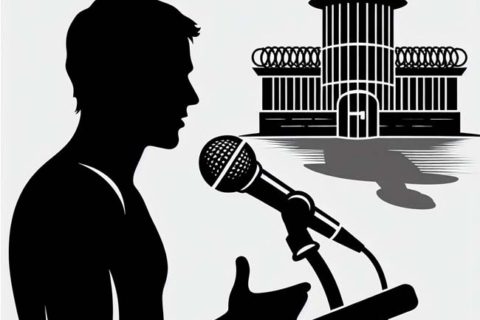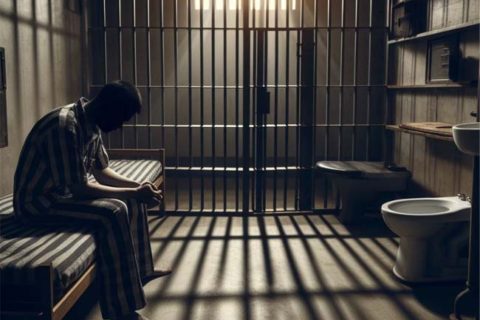Stanford Prison Experiment referred to a social psychology study that happened in August 1971 at Stanford University. It was where college students became either prisoners or guards in a simulated prison environment. The U.S. Office of Naval Research was the one who funded this experiment.
The Stanford Prison Experiment was intended to last for two weeks. However, it was terminated before it finished. The question is, how long did it last before the situation became out of control?

As mentioned before, the Stanford Prison Experiment was terminated before it finished. It was on the sixth day to be exact. Why it was terminated was due to the emotional breakdowns of prisoners in addition to excessive aggression of the guards. Check out how the experiment went below.
In the beginning, the volunteers were divided into prisoners and guards. There were nine guards and nine prisoners. Only three prisoners and three guards were included in the experiment at first. As for the rest, they were asked to wait at their home in case they were needed.
The cells that the prisoners were located in were so small. Each of them could only accommodate three cots that were used by prisoners to sleep or sit. Apart from that, there was no space left. In the very early morning, the prisoners were forced to wake up after hearing the whistles from the guards. The guards used counts as they were important to make the prisoners familiar with their numbers and for them to control over the prisoners. This scene was the first time the guards and prisoners confronted each other.
The first day went smoothly. However, it was different on the second day. On the second day, a rebellion happened. It broke in the morning. At the time, the prisoners started their rebellion by removing their stocking caps, ripping off their numbers, and putting their beds against the door. It angered and frustrated the guards, especially when the prisoners started to taunt and curse them. As they felt like they could not handle it by themselves, they called the rest of the guards who were waiting at their home. All of them agreed to use violence to treat violence. First, they used a fire extinguisher and took the prisoners away from the doors. Then, they went into the cell, undressed these prisoners, kicked the beds out of the cells, put the leader of the rebellion into solitary confinement, and started to harass and intimidate the prisoners.
While the rebellion had been crushed for a while, these guards faced another issue. There was no way for nine of them to be on duty at the same time. Fortunately, they came out with a thing called a privilege cell. Basically, the prisoners that behaved well were put into a privilege cell. On the contrary, those who were bad were put into the bad cells. The intention was to break the solidarity among prisoners and they succeeded because the prisoners thought those who were put in a special cell were informers. It made them not trust each other.
When the solidarity of the prisoners was torn apart, the guards became more solid after the rebellion. These guards thought these prisoners were troublemakers who might harm them. As a response, they started to control them more and to be more aggressive. They had full control of these prisoners, including how they did their business. As these prisoners were forced to do their business mostly in their cells, the environment became bad.
On the next day, there was a prisoner who started to show signs of suffering. He started crying and doing something weird. At first, everyone thought he was pretending and it was just to fool everyone so that he would be released. Then, he was offered to become an informant. Then, he started screaming and cursing again and it was out of control. In the end, everyone was convinced that he was indeed suffering and luckily was released.
On the following day, the prisoners were visited by their parents and friends. The situation got better as they pretended to convince them that everything was fine.
After that, there was a rumor of mass escape. The rumor was about the prisoner that was just released to gather his friends to come to the prison to release the rest of the prisoners. Then, an informant was put in the same cell where the former prisoner was located. Besides, there was also a plan to transfer the prisoners to old jail. The request was rejected. After the first plan was rejected, there was also the second plan. Fortunately, the rumor of mass escaping was also only a rumor. However, it was used by the guards to seek revenge on the prisoners. They started to harass them again, more than before.
During the experiment, a Catholic priest who had been a prison chaplain was invited to evaluate how realistic the prison was. Everyone talked to him, except for one who was not feeling well. Instead of a priest, he said he would like to see a doctor. However, the others labeled him as a bad prisoner. At first, he wanted to leave. However, after hearing such a thing from others, he refused and asked to go back to prove that he was not a bad one. When the leader of the experiment said that it was an experiment, he then agreed to go out of the scene.
Then, the prisoners who thought they had the right to be freed were chained and brought before the Parole Board. During these parole hearings, several things occurred. In the end of the experiment, the prisoners were disintegrated. The guards had full control.
On the next day, there was a prisoner who went on a hunger strike to force his release. After failing to make him eat, the guards put him into solitary confinement and he refused it. The other prisoners labeled him as a troublemaker.
On the fifth day, some parents who visited the site asked the leader of the experiment to contact a lawyer so that their sons could be out of prison. The leader agreed and the lawyer came the next day. Just like that the experiment ended.

A bookworm and researcher especially related to law and citizenship education. I spend time every day in front of the internet and the campus library.




